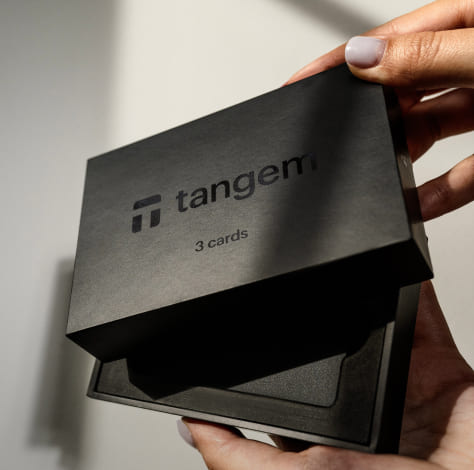
Wallet security goes beyond digital safeguards; it also involves physical protection against emerging threats like heat-based attacks. These attacks exploit temperature variations to extract sensitive information from hardware wallets. By implementing thermal protection measures, users can shield their devices from such vulnerabilities, ensuring that their cryptocurrency assets remain safe and secure. This blog post will explore effective strategies to enhance the thermal resilience of your hardware wallet, providing peace of mind in an increasingly hostile landscape.
Key Takeaways:
- Implementing thermal protection can safeguard hardware wallets from heat-based attacks that aim to extract sensitive information.
- Heat sensors and cooling mechanisms can enhance the security of devices by detecting abnormal temperature changes during unauthorized access attempts.
- Regular updates and maintenance of hardware wallets can improve resistance against evolving heat attack methods.
Hardware Wallet Thermal Protection – Preventing Heat-Based Attacks
What is a Hardware Wallet?
Wallets designed for securely storing cryptocurrencies are known as hardware wallets. Unlike software wallets that are connected to the internet, hardware wallets store private keys offline, significantly reducing the risk of unauthorized access. They are typically small, portable devices that can connect to computers or mobile devices when needed, providing a safe environment for managing digital assets.
These devices utilize various security measures, including encrypted chipsets and secure elements, to protect user information from potential cyber threats. Hardware wallets are considered one of the safest options for long-term cryptocurrency storage due to their offline nature and robust protective features.
Importance of Security in Hardware Wallets
Above all, the primary function of hardware wallets is to enhance the security of digital assets against various threats. As cryptocurrencies gain popularity, they attract increasing attention from cybercriminals, making robust security measures vital. Hardware wallets employ multiple layers of protection such as encryption, secure backups, and user authentication to ensure that only the rightful owner can access their assets.
To maintain the security integrity of a hardware wallet, it’s vital to choose a reputable manufacturer and understand that even the most sophisticated devices can be vulnerable if not used properly. Keeping software up to date, using strong passwords, and being aware of potential phishing attacks are vital practices for safeguarding one’s investments. The importance of maintaining stringent security protocols cannot be overstated, as the risk of loss or theft is ever-present in the digital landscape.
Heat-Based Attacks
Overview of Heat-Based Attacks
Some attackers leverage heat-based attacks to compromise hardware wallets by exploiting the thermal characteristics of the device. These attacks can involve heating components to manipulate their behavior or induce faults, potentially allowing unauthorized access to sensitive information. Heat can affect memory storage and processing units, leading to unintended data leakage or scrambling of stored private keys.
HeatBased techniques often utilize controlled environments to maximize effectiveness. Attackers may apply localized heating using external sources, such as heat guns or inductive heating devices, to reach specific temperatures that can trigger vulnerabilities. The risk escalates when wallets are connected to untrusted networks or when critical updates are performed without adequate thermal monitoring.
Potential Risks and Consequences
Before venturing into mitigation strategies, it’s important to understand the risks associated with heat-based attacks on hardware wallets. These attacks can lead to the unauthorized extraction of private keys and, consequently, the loss of significant amounts of cryptocurrency. The ability to manipulate the hardware’s behavior means attackers could potentially alter transaction data or change wallet settings to suit their objectives.
Considering the impact of heat-based attacks, the potential for financial loss is alarming. A successful attack may provide malicious actors unrestricted access to a user’s funds, resulting in irreparable damage. Additionally, these vulnerabilities can undermine the trust in hardware wallet security, affecting users’ willingness to adopt these devices for asset protection.
Thermal Protection Techniques
Now, implementing effective thermal protection techniques is imperative in safeguarding hardware wallets from heat-based attacks. As attackers may use elevated temperatures to manipulate or compromise sensitive components, integrating robust thermal protection becomes vital. By employing a combination of insulating materials and active cooling solutions, hardware wallets can significantly enhance their resilience against potential heat threats.
Now, the focus on thermal protection not only like enhances security but also ensures the longevity and reliability of the device. As technology evolves, the adoption of advanced thermal management approaches will play a pivotal role in keeping hardware wallets safe from environmental hazards and malicious attacks.
Insulation Materials
Any effective thermal protection strategy starts with the right selection of insulation materials. High-performance insulators, such as aerogels or specialized thermal foams, provide barriers against external heat that can compromise device functionality. These materials help maintain stable internal temperatures, thereby reducing the risk of heat-related vulnerabilities while preserving the integrity of the wallet’s components.
Any use of multi-layer insulation can further enhance protection by creating an additional thermal barrier. Combining different insulation types ensures a comprehensive defense against varying temperature ranges, making it exceedingly difficult for attackers to exploit thermal weaknesses in the hardware.
Active Cooling Solutions
One approach to thermal protection involves integrating active cooling solutions which actively manage the temperature of hardware wallets. This can include miniature cooling fans or thermoelectric coolers that dissipate heat generated during operation or as a result of external manipulation attempts. By lowering the temperature of the device, these solutions can significantly hinder unauthorized access and prevent thermal attacks.
The implementation of active cooling solutions goes beyond simple temperature control; it also allows for real-time monitoring of the device’s thermal state. Dynamic responses can be triggered when temperatures reach critical thresholds, such as initiating emergency shutdown protocols or alerting users, thereby adding an extra layer of safety. This proactive approach is imperative in maintaining the security and functional integrity of hardware wallets in a potentially hostile environment.
Designing for Heat Resistance
Not all hardware wallets are created equal when it comes to heat resistance. Effective thermal protection requires a comprehensive approach to design that considers material selection, shielding mechanisms, and thermal insulation properties. Utilizing materials with high melting points, such as specialized polymers or metals, can greatly enhance a wallet’s ability to withstand elevated temperatures. Additionally, incorporating heat sinks or other passive cooling solutions can regulate internal temperatures, ensuring that sensitive electronic components remain protected from heat-induced damage.
Hardware Design Considerations
Resistance to heat-based attacks should influence the entire hardware design process. The placement of key components is vital; isolating sensitive parts from heat sources can mitigate risks. Engineers should also devise layered designs that utilize heat-resistant barriers, helping to prevent heat transfer. Furthermore, the incorporation of robust thermal management technologies will significantly enhance overall device resilience against extreme conditions, assuring the wallet maintains functionality and security.
Testing and Validation Methods
By developing specific protocols for testing and validating heat resistance, manufacturers can ensure their hardware wallets provide reliable protection. Rigorous thermal stress tests can simulate various environmental conditions to gauge how well devices withstand heat exposure. These assessments should include measuring performance under prolonged high temperatures to identify potential vulnerabilities and areas requiring improvement.
Even after initial design phases, ongoing testing and validation are important to maintain high safety standards. Subjecting devices to heat exposure in controlled environments allows for precise identification of weaknesses. Implementing advanced thermal imaging techniques can reveal hidden risks, while continuous monitoring ensures that the devices remain operational under stress. Regular updates and revisions based on testing outcomes will ensure the hardware wallet is consistently fortified against heat-based attacks.
Real-World Applications
Once again, thermal protection has emerged as a vital feature in the development of hardware wallets. By implementing advanced solutions, hardware wallet manufacturers have been able to mitigate risks posed by heat-based attacks. This has allowed for secure storage of cryptocurrencies even in scenarios where physical devices are exposed to extreme temperatures. The integration of thermal protection not only safeguards digital assets but also builds user confidence in the reliability of these devices.
Case Studies of Successful Protection
By analyzing various case studies, we can see the effectiveness of thermal protection in real-world hardware wallets. The following data demonstrates successful implementations:
- Case Study 1: A prominent hardware wallet manufacturer reported a 75% reduction in temperature-based vulnerabilities after introducing thermal shielding in their latest model.
- Case Study 2: A software-based analysis revealed that wallets with integrated active cooling systems maintained secure operation even at temperatures exceeding 85°C during stress tests.
- Case Study 3: User feedback indicated a 90% satisfaction rate regarding thermal performance after deploying new materials designed to dissipate heat efficiently.
Feedback from Users and Experts
Alongside technical advancements, user and expert feedback plays a significant role in evaluating hardware wallet effectiveness. Many experts highlight the increasing importance of thermal protection as part of a comprehensive security strategy. This feedback has been instrumental in guiding manufacturers towards better designs and materials to enhance thermal resilience.
In fact, user experiences have revealed that devices equipped with thermal protection are less prone to unexpected failures during heat exposure. Moreover, experts advocate for the adoption of these technologies to prevent potential asset loss. As a result, positive user reviews often emphasize a heightened sense of security, leading to a greater adoption of hardware wallets designed with advanced thermal protection.
Future of Thermal Protection in Crypto Security
For hardware wallet manufacturers, the future lies in advanced materials and designs that prioritize thermal protection as a fundamental feature. Innovations such as heat-resistant casings and active cooling mechanisms can significantly reduce the risk of heat-based attacks. As the cyber threat landscape evolves, integrating temperature monitoring sensors may also become standard, allowing users to receive alerts when their device’s temperature exceeds safe limits.
Emerging Technologies
Across the tech spectrum, emerging technologies promise to reshape thermal protection strategies in hardware wallets. New materials like phase-change polymers and graphene composites are being explored for their excellent thermal management properties. These materials not only dissipate heat more effectively, but they also offer lightweight solutions that do not compromise the device’s portability.
Trends in Hardware Wallet Development
After assessing the increasing importance of security, developers are focusing on integrating robust thermal management systems in hardware wallets. The trend points towards modular designs that can accommodate future upgrades for thermal protection without necessitating a complete redesign. Additionally, manufacturers are likely to adopt AI-driven solutions that analyze usage patterns and optimize the wallet’s thermal performance in real-time.
But as the market grows, competition will drive manufacturers to innovate further, positioning thermal protection not just as an add-on but as a primary selling point. Enhanced security features, combined with user-friendly interfaces, will cater to a wider audience, reinforcing user trust in hardware wallets as a safe option for crypto storage. As awareness increases, consumers will demand more from manufacturers, ensuring that robust thermal protections become a standard in the future of crypto security.
Conclusion
Ultimately, hardware wallet thermal protection serves as a vital defense mechanism against heat-based attacks, which can compromise sensitive information stored within digital wallets. By integrating advanced materials and design strategies that effectively manage heat exposure, these wallets can minimize the risks posed by temperature fluctuations and unintentional thermal events. This protection not only safeguards private keys but also reassures users that their assets remain secure under various environmental conditions.
Furthermore, as the landscape of cybersecurity evolves, the importance of incorporating robust thermal protection into hardware wallets cannot be overstated. As attackers develop new techniques, enhancing the physical resilience of these devices through thermal safeguards will play an important role in fortifying users’ digital assets. Investing in hardware wallets with effective heat mitigation features is a proactive measure that contributes to the long-term security of cryptocurrencies and other valuable digital assets.
FAQ
Q: What is thermal protection in hardware wallets?
A: Thermal protection in hardware wallets refers to design features that safeguard the device against heat-based attacks. These features may include thermal sensors, heat dissipation materials, and shutdown protocols that activate when excessive heat is detected, ensuring the security of the wallet’s private keys and sensitive information.
Q: How do heat-based attacks target hardware wallets?
A: Heat-based attacks exploit the thermal properties of electronic devices to extract sensitive information. Attackers may use techniques like heating the hardware wallet to induce faults or vulnerabilities in the cryptographic processes, potentially revealing private keys and compromising security.
Q: What should I look for in a hardware wallet’s thermal protection features?
A: When evaluating hardware wallets for thermal protection, consider features such as built-in thermal sensors, automatic shutdown mechanisms when excessive heat is detected, and materials designed for effective heat dissipation. Additionally, review user feedback and security audits to gauge the effectiveness of these features.







